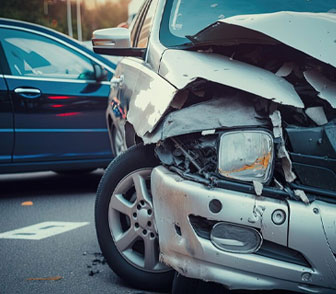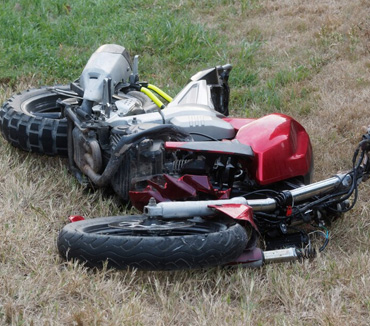Tips for Taking Car Accident Scene Photos
In this modern age, taking pictures is practically second nature. We use pictures to document our daily lives, remember special occasions and share events with family and friends. After being involved in a motor vehicle accident, it is important that you or someone with you be able to establish an accurate depiction of the scene. Use your phone (if you do not have a camera) to gather photographic evidence.
Most crashes cause some sort of damage, whether that damage was inflicted on the driver, the passengers or the vehicle itself. Dealing with the aftermath of a car accident can be very disorienting and painful but gathering evidence quickly and efficiently can go a long way to help your case later on.
If you were involved in a crash, make sure you know the types of pictures you should take of the vehicle, surrounding scene and the injured parties.
How Photographs Help
In many situations, the evidence of a car accident is quickly removed, which is why taking photographs of the scene and other details surrounding the crash may be your only way to preserve evidence. Most states require drivers to pull their vehicles off of the roadways if it is safe to do so in order to prevent further accidents. But after that, the tow trucks will haul away damaged vehicles and road crews will sweep the debris into bins. Without ample photographs, many motor vehicle accident cases result in a he-said, she-said battle.
The photos you take will come in handy when you deal with insurance adjusters who are investigating your claim, and pictures of the accident scene will also be a big asset if a personal injury lawsuit is filed as a result of the accident. Accident victims are typically allowed to rely on these pictures to help them describe the location of the accident and the road conditions on the day of the accident.
These photos can be used to help paint a picture of the location of the accident (i.e. an intersection), road and weather conditions at the time, the position of the vehicles, collision points, debris, and a host of other accident details.
Any Camera Will Do
When taking pictures of a crash site, you are simply trying to preserve evidence, not win any photography awards. So any type of device that takes pictures will do the trick. Most people do not carry an actual camera with them anymore, but most everyone has a smartphone. Your phone’s camera has become increasingly sophisticated and often has a flash built in for photographing scenes at night. A disposable camera is also an option. Whatever sort of camera or device you are using, if it has the ability to time/date stamp photos, be sure you have that function enabled.
Capture the Details
When you are thinking about what to photograph, it may not be obvious which details of the accident will become important later on. It is preferable to take more pictures than you think you may need as you will not be able to return for more if you missed an angle or detail. We recommend that you take a lot of pictures, and then sort through them later.
Be aware of factors that can affect the quality of your pictures, such as sunlight, shadows or weather conditions. If your camera has different settings, experiment with them to get the best quality.
Take pictures of:
- Your car, and the damage it sustained
- The other cars involved in the accident, and the damage they sustained
- Any skid marks
- Any vehicle parts, shattered glass, or other debris that may have fallen onto the road
- The accident site (i.e., the intersection, parking lot, or other location)
- The location/condition of stop signs and traffic signals
- The environment/weather conditions
- Any visible bodily injuries to you, your passengers, and other parties (if feasible and consented to, of course).
- Capture photos from multiple angles. Close-up shots also work well to show the extent of the damage.
- Include photos that highlight the angles which the vehicles collided, skid marks or lack of skid marks, positioning on the roadway, traffic signs, and any other pertinent details.
The Vehicles
Taking pictures of your vehicle after a crash is absolutely necessary, even if you think the damage in minimal. Make sure your photos include your license plate, to substantiate that your vehicle was actually involved, and take pictures from several different angles. If your car is in the same position as it was when it was hit, (in other words, if you left it where it was after the collision), take photos that include the rest of the accident scene as well.
In addition to photos of your own vehicle, you should gather evidence pertaining to any other automobiles involved as well. Again, make sure some of the photos include the license plates. Take a picture of the other driver’s license, registration and insurance card.
The Crash Site
Pictures of the scene can go a long way to help prove or identify the cause of the accident. If, for example, a stop sign was illegible or hidden, and the failure to stop caused an accident, photos of that hazard could help prove liability. Take pictures of any skid marks on the road as these can indicate that the brakes were applied, as well as the approximate speed the car was traveling. Take photos that are close up and far away. Place a small item beside the tread marks so that scale is easier to estimate in the future.
Take pictures of any obstructions on the roadway that may have contributed to the accident, take pictures of these items, such as tree branches, tire tread or other debris. In some cases, government agencies or private companies may be partly to blame for the accident if they failed to maintain the roadways in a reasonably safe manner. If possible, keep a common landmark in the photographs to help determine the scale and distance between items featured in your pictures.
Your Injuries
If you or your passengers were injured during the crash, be sure to take photos of all injuries. Even injuries that seem minor, like bruises, scratches, bumps, and swollen areas could turn out to be serious injuries later on, or could cause chronic or lasting pain.
Although pictures are important, they should not be the only form of evidence you gather after an accident. Discover the name of the other drivers, motorcyclists, and pedestrians involved in the crash, as well as phone numbers, license plate numbers, driver’s license numbers and insurance information. You should always work under the assumption that the other driver will not admit fault, so always err on the side of caution and gather more evidence than necessary.
Should You Speak with an Attorney?
Thousands of people die in car accidents each year, which is why the damage sustained in these crashes should never be taken lightly. If you were harmed in a crash, your first step should always be to call 911 and ask for medical attention. Once you have been properly taken care of, make sure you contact an experienced personal injury attorney for help attaining justice and compensation for your injuries.
Call us now at 1-877-241-9554 to learn more about your options. A free consultation is just a phone call away.
Request A
Free Consultation
Fields Marked With An ” *” Are Required










